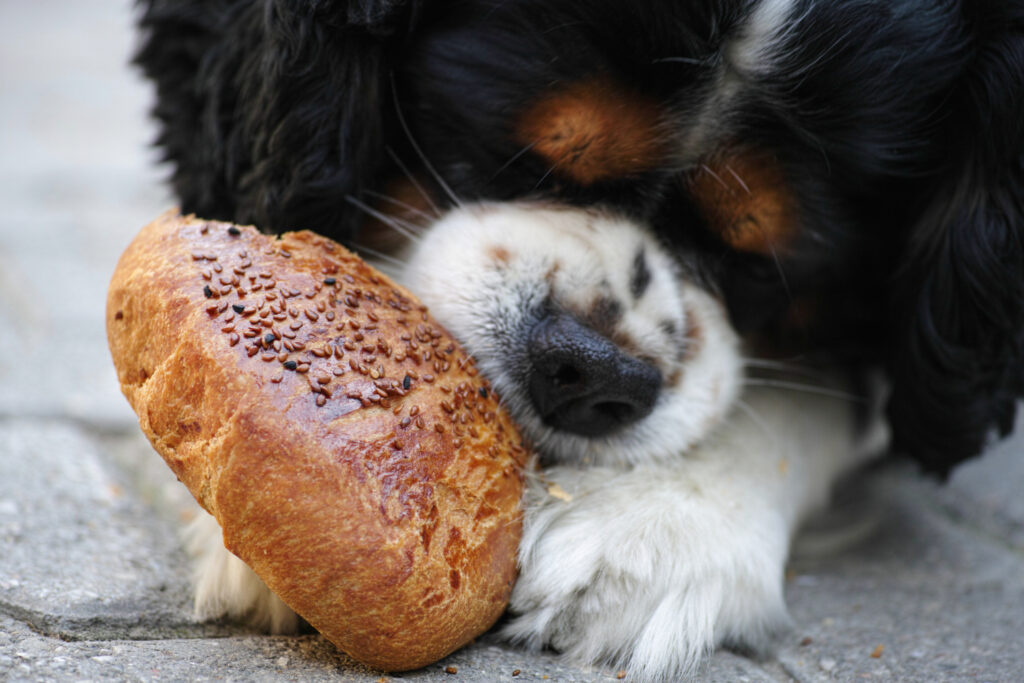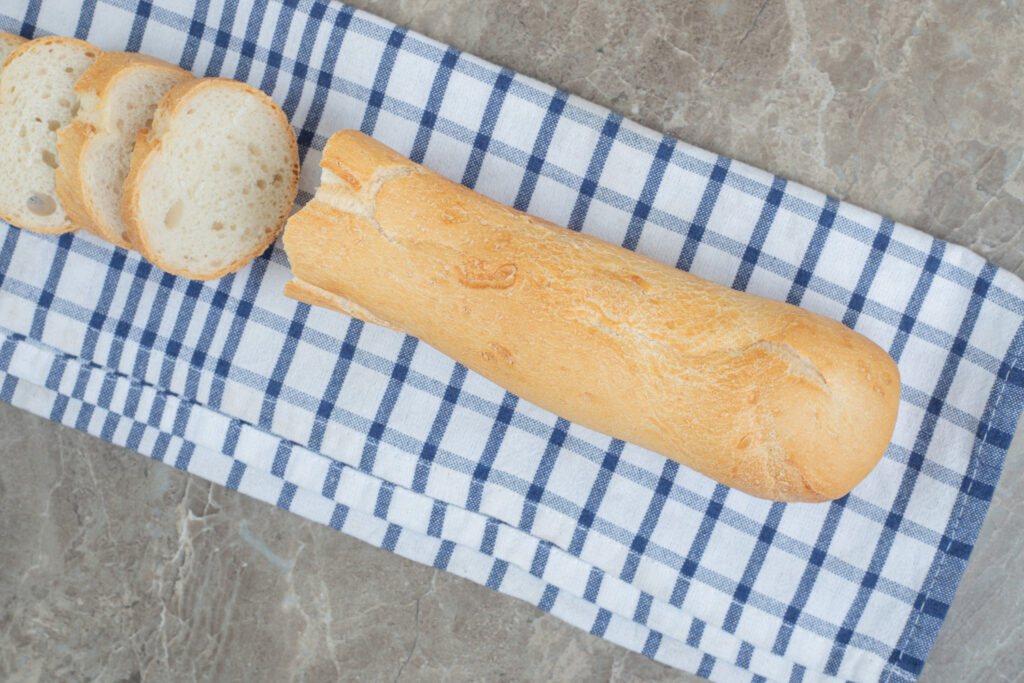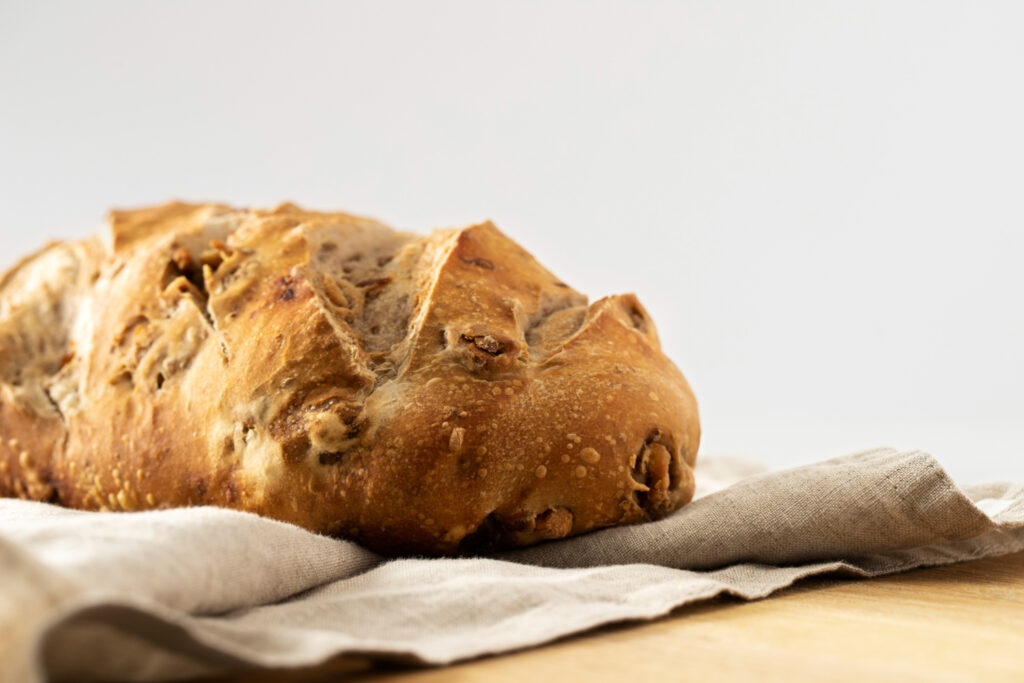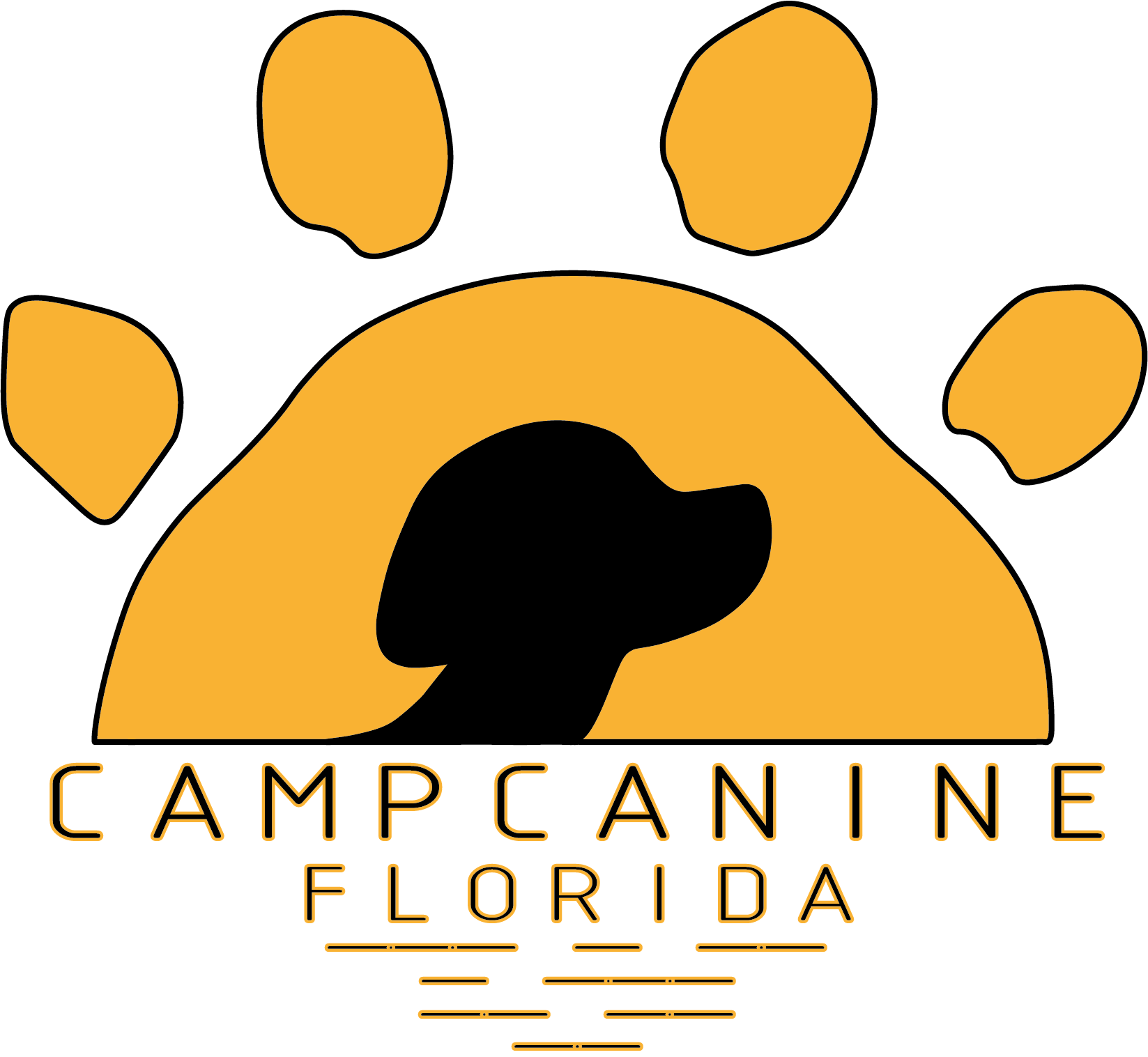If you are a dog owner, you have likely found yourself wondering at some point, such as: Can dogs eat bread? Bread is a common staple in many households, and it’s often tempting to share a piece with our furry friends. However, while bread is not inherently toxic to dogs, it’s not always the best choice for their health. In this article, we will take a closer look at the question can dogs eat bread and explore the potential benefits and risks of feeding bread to your canine companion.
Overview of bread

Bread is a staple food that has been enjoyed by humans for thousands of years. It is typically made from a mixture of flour, water, salt, and yeast, which is kneaded together and then baked to create a soft, fluffy loaf. Bread comes in many different varieties, including white bread, whole wheat bread, sourdough bread, and rye bread, and it can be used for a variety of purposes, such as making sandwiches, toast, and croutons. While bread is a popular and convenient food for humans, it’s important to be aware of its potential health benefits and drawbacks, particularly when it comes to feeding it to our pets.
Can dogs have bread?
Dogs are known for their love of food, and bread is a common staple in many households. However, as a responsible pet owner, it’s important to consider whether can dogs eat bread safely. While bread is not harmful to dogs in small quantities, there are a few things to keep in mind before offering your furry friend a slice.
Can puppies eat bread?

Puppies have delicate digestive systems and are more susceptible to food allergies and intolerances compared to adult dogs. While bread may seem like a harmless treat for puppies, it’s important to remember that it’s not a necessary part of their diet. Additionally, some puppies may have trouble digesting certain ingredients commonly found in bread, such as wheat or yeast.
So, When can puppies eat bread? As a general rule, it’s best to avoid feeding puppies bread until they’re at least six months old and have developed a more robust digestive system. If you do decide to offer your puppy bread, make sure it’s a small amount and doesn’t contain any harmful ingredients like raisins or chocolate.
Nutrition facts of bread
Here’s a table for the nutrition facts and daily value of 1 slice (30g) of bread for dogs:
| Nutrition Facts | Amount Per Serving | Daily Value (%) |
| Calories | 79 kcal | – |
| Fat | 1 g | 1% |
| Carbohydrate | 15 g | 5% |
| Protein | 2.7 g | 5% |
| Sodium | 147 mg | 6% |
| Potassium | 35 mg | 1% |
| Cholesterol | 0 mg | 0% |
Note: The daily values are based on a 30-pound adult dog’s daily calorie intake of 800 kcal/day. Daily values may vary depending on the dog’s breed, age, size, and activity level. It’s important to consult with a veterinarian to determine the appropriate diet for your dog.
Is bread good for dogs? What are the benefits?
While bread may not be harmful to dogs in small quantities, it’s important to remember that it’s not a necessary part of their diet. While there aren’t any significant benefits of feeding bread to dogs, here are some potential advantages:
- Provides energy: Bread is a source of carbohydrates, which can provide dogs with the energy they need to stay active.
- Helps with digestion: Whole grain bread contains fiber, which can promote healthy digestion in dogs.
- Serves as a training treat: Bread can be used as a training treat for dogs, especially if they’re not motivated by other types of treats.
- Helps with medication administration: Some pet owners use bread to help their dogs swallow medication more easily, by wrapping the pill in a small piece of bread.
However, it’s important to keep in mind that these potential benefits are outweighed by the risks if bread is fed to dogs in large quantities or on a regular basis. If you’re considering feeding your dog bread, it’s best to consult with your veterinarian to determine whether it’s appropriate for your dog’s individual needs.
Is bread bad for dogs?

Bread may not be inherently bad for dogs, but it does pose some potential risks if fed in large quantities or on a regular basis. Here are some risks associated with feeding bread to dogs:
- Can cause weight gain: Bread is high in calories and carbohydrates, which can contribute to weight gain in dogs if they consume too much.
- Can cause digestive issues: Some dogs may have trouble digesting bread, especially if it contains ingredients like wheat or yeast. This can lead to bloating, gas, and diarrhea.
- Can lead to nutrient imbalances: Bread doesn’t contain all the nutrients dogs need to maintain a balanced diet. If dogs consume too much bread, it can displace other more nutritious foods from their diet, leading to nutrient imbalances.
- Contains harmful ingredients: Some types of bread may contain harmful ingredients for dogs, such as raisins, garlic, onions, or chocolate, which can be toxic to them.
- May contribute to dental problems: The high carbohydrate content in bread can contribute to dental problems in dogs, such as tooth decay or gum disease.
In summary, while bread may not be toxic to dogs in small quantities, it’s important to feed it in moderation and with caution. It’s always best to consult with a veterinarian to determine what foods are appropriate for your dog’s individual needs.
Can dogs with upset stomachs eat bread?
Feeding bread to dogs with upset stomachs is not recommended. While some may believe it helps, the best approach is to provide a bland diet of rice and boiled chicken. Bread can be difficult for dogs to digest, especially if it contains ingredients like wheat or yeast, which can worsen their upset stomach. It’s best to consult with a veterinarian to determine the appropriate diet and treatment plan for your dog’s individual needs.
What kind of bread can dogs eat?
When it comes to feeding our furry friends, it’s necessary to be aware of what foods are safe for them to consume. Bread is a common human food that many dog owners might be tempted to share with their pets, but not all types of bread are suitable for dogs. So what kind of bread can dogs eat?
Can dogs eat wheat bread?
Yes, dogs can generally eat wheat bread, as long as it does not contain any harmful additives such as garlic, onions, raisins, or other toxic ingredients. Wheat bread can be a good source of carbohydrates for dogs, but it should be fed in moderation and not as a primary source of nutrition. It’s always a good idea to consult with a veterinarian before making any major changes to your dog’s diet, as they can provide tailored advice based on your pet’s individual needs and health history.
Can dogs eat whole wheat bread?
Yes, dogs can eat whole wheat bread, and it can be a good source of fiber and other nutrients for them. Whole wheat bread is generally a healthier choice than white bread because it contains more fiber, vitamins, and minerals. But it should still be given in small amounts and not as the main source of food. You must check the ingredients list and make sure that the bread does not contain any harmful additives such as garlic, onions, raisins, or other toxic ingredients before feeding it to your pup.
Can dogs eat white bread?
Yes, dogs can eat white bread, but it should be fed in moderation and not as a primary source of nutrition. White bread does not contain any harmful ingredients for dogs, but it is not as nutritious as whole wheat bread or other types of dog food. Additionally, some dogs may be sensitive to gluten or other ingredients in white bread, so it’s important to monitor your pet for any signs of digestive upset or allergies.
Can dogs eat bread with seeds?
It depends on the type of seeds in the bread. Some seeds, such as chia seeds and flaxseeds, can be beneficial for dogs because they are a good source of omega-3 fatty acids and other nutrients. However, other types of seeds, such as poppy seeds, can be harmful to dogs if consumed in large quantities. Poppy seeds contain small amounts of opiates that can cause sedation, confusion, and other symptoms in dogs if ingested in large enough amounts.
Additionally, some dogs may have trouble digesting seeds, which can cause digestive upset or blockages. As with any human food, it’s important to check the ingredients list and make sure that the bread does not contain any harmful additives for dogs, including seeds.
Can dogs eat bread and butter?
While bread is generally safe for dogs to eat in moderation, butter is not recommended for dogs as it is high in fat and can lead to weight gain and digestive issues. Additionally, some dogs may be lactose intolerant and may experience stomach upset or diarrhea if they consume dairy products like butter. Therefore, it’s best to avoid feeding bread and butter to your dog and instead offer them healthier treats like small pieces of cooked lean meat, vegetables, or fruits that are safe for dogs.
Can dogs eat bread with yeast?
It is generally not recommended to feed dogs bread with yeast. Yeast can cause digestive upset and even alcohol poisoning in dogs if consumed in large quantities. When yeast ferments in a dog’s stomach, it can produce alcohol, which can cause symptoms like vomiting, diarrhea, disorientation, and even difficulty breathing or coma in severe cases.
Furthermore, some dogs may be allergic to yeast, which can cause skin irritation, itching, and other symptoms. Therefore, it’s best to avoid feeding bread with yeast to your dog and instead offer them treats that are safer and more nutritious. If you suspect that your dog has ingested bread with yeast or is experiencing any symptoms of alcohol poisoning, seek veterinary care immediately.
Can dogs eat bread crumbs?
In general, bread crumbs are not toxic to dogs, and small amounts of plain bread crumbs are unlikely to cause any harm. However, bread crumbs are not a nutritionally significant food for dogs, and they may contain added salt or other seasonings that could be harmful in large quantities. Additionally, bread crumbs can be a choking hazard for dogs if they are not finely ground. Therefore, it’s best to feed bread crumbs to your dog only in small quantities as an occasional treat, and to make sure that they are plain and not seasoned.
Can dogs eat bread crust?
Yes, dogs can eat bread crusts in moderation, as long as they do not contain any harmful additives. Bread crusts are safe for dogs to eat, but they are not nutritionally significant and should not make up a significant portion of their diet. Additionally, some dogs may have difficulty digesting bread crusts or may be allergic to certain ingredients in the crust, such as wheat or gluten.
Can dogs eat banana bread?
You should not feed your dog banana bread because the high sugar content is harmful to a dog. Dogs can benefit from bananas, but not from the sugar and fat humans add to banana bread to make it pleasant. Sugar too much has been linked to diabetes, weight gain, and tooth damage. Your dog will enjoy banana bread if you give him little portions.
Can dogs eat raisin bread?
Raisins and any other form of grapes are toxic to dogs and should never be fed to them. Raisins and grapes severely poison dogs. In fact, there is no safe quantity of this fruit for your dog, even though studies on it have not shown why it is so hazardous. Some dogs may eat one or two raisins or grapes and be alright, but others can suffer severe renal failure from only one grape. Because of this, you are giving him bread that contains raisins is unhealthy and potentially harmful.
Can dogs eat bread and chocolate?
Chocolate is toxic to dogs and could cause a medical emergency. You cannot give chocolate to your pup. Theobromine, an ingredient in chocolate, impacts respiratory, cardiovascular, and central neurological systems. Theobromine poisoning in dogs requires immediate emergency veterinary care.
How to feed bread to your dog safely?
If you want to feed bread to your dog, here are some tips to do it safely:
- Choose the right type of bread: Choose plain white or whole wheat bread without any added sugars, salt, or harmful ingredients like garlic or onions.
- Feed in moderation: Bread should only be fed to your dog as an occasional treat and not as a primary source of nutrition.
- Cut it into small pieces: To avoid choking, cut the bread into small pieces or tear it into small chunks before feeding it to your dog.
- Monitor for any adverse reactions: Some dogs may be allergic to certain ingredients in bread or may have trouble digesting it, so it’s important to monitor your dog for any signs of digestive upset or allergic reactions.
- Avoid feeding bread with toppings: Do not feed your dog bread with any toppings like butter or jam, as they can be high in fat, sugar, or other ingredients that can be harmful to dogs.
Consult with a veterinarian: If you have any concerns about feeding bread to your dog or your pet’s diet in general, consult with a veterinarian for personalized advice and recommendations.
How much bread can a dog eat?
Bread should only be given to dogs in small quantities as an occasional treat, as it can cause bloating and other digestive issues. To avoid any problems, it’s recommended to feed your dog only a small piece or crust of bread, rather than a whole slice. If your dog accidentally consumes a large amount of bread, such as a whole loaf, it is important to seek veterinary advice as soon as possible. Remember, a balanced diet with appropriate amounts of protein, fats, and other essential nutrients is crucial for your dog’s overall health and well-being.
How to store leftover bread?

If you have leftover bread that you would like to give to your dog as a treat, it’s important to store it properly to prevent it from going bad or becoming contaminated. Here are some tips for storing bread leftovers for dogs:
- Keep it in an airtight container: Store the bread in an airtight container to prevent air and moisture from getting in and making the bread stale or moldy.
- Store in a cool, dry place: Keep the container of bread in a cool, dry place, such as a pantry or cupboard, away from heat and humidity.
- Freeze it: If you have a large amount of bread leftover, you can freeze it in a freezer-safe container or plastic bag. Frozen bread can be thawed and fed to your dog as a treat later on.
- Use within a few days: Bread leftovers should be used within a few days to ensure freshness and prevent spoilage.
- Check for mold or signs of spoilage: Before giving the bread to your dog, check for any signs of mold or spoilage, such as a sour smell or discolored spots. If you notice any signs of spoilage, discard the bread immediately.
By following these tips, you can safely store bread leftovers for your dog and ensure that they are getting a safe and healthy treat.
Signs need to see a veterinarian
Feeding your dog bread is generally safe if done in moderation and in accordance with the guidelines we have discussed earlier. However, in some cases, feeding bread to your dog may cause digestive upset or other health issues that require veterinary attention. Here are some signs that you may need to see a veterinarian after feeding bread to your dog:
- Vomiting or diarrhea: If your dog experiences vomiting or diarrhea after eating bread, this may be a sign of digestive upset or food intolerance.
- Lethargy or weakness: If your dog seems more lethargic or weak than usual after eating bread, this may indicate a more serious health issue, such as pancreatitis.
- Abdominal discomfort or bloating: Bread can cause bloating in dogs, which is a serious condition that requires immediate veterinary attention.
- Allergic reaction: If your dog is allergic to any of the ingredients in the bread, they may experience symptoms such as skin rash, itching, or difficulty breathing.
- Change in appetite or behavior: If your dog suddenly loses interest in food or shows signs of pain or discomfort after eating bread, this may indicate a more serious health issue.
If you notice any of these signs or other concerning symptoms after feeding bread to your dog, it’s important to seek veterinary attention as soon as possible. Your veterinarian can evaluate your dog’s symptoms and provide appropriate treatment to ensure their health and well-being.
Recipes and serving ideas
While bread is not a nutritionally significant food for dogs, it can be a safe and occasional treat in moderation. Here are some nutrient-rich recipes and serving ideas for bread that you can offer to your furry friend:
Homemade whole wheat bread
You can make homemade whole wheat bread for your dog by using whole wheat flour, water, and a small amount of honey for sweetness. This recipe is a healthier option than store-bought bread because it contains fewer preservatives and additives. Once the bread is baked, cut it into small pieces or tear off small chunks for your dog to enjoy.
Bread pudding
Make a dog-friendly bread pudding by mixing small pieces of whole wheat bread with low-sodium chicken or beef broth and a small amount of cottage cheese or plain Greek yogurt for added protein. Bake the mixture in a small dish for 20-25 minutes at 350 degrees Fahrenheit, or until the pudding is set. Let it cool and cut it into small pieces for your dog to enjoy.
Toasted bread and eggs
Toast a small piece of whole wheat bread and cut it into small pieces. Cook a scrambled egg with a small amount of olive oil and serve it over the toasted bread pieces for a protein-rich breakfast for your furry friend.
Remember, when feeding bread to your dog, it should only be given in moderation as an occasional treat. Also, be mindful of any possible allergies or digestive sensitivities your dog may have to certain ingredients. As always, consult with your veterinarian before introducing any new foods to your dog’s diet.
FAQs
Why do dogs love bread?
Dogs may be attracted to the smell and taste of bread, which can be appealing to them as a human food. Additionally, some dogs may find the texture of bread enjoyable to chew.
Is it safe to give dogs bread if they have a grain-free diet?
If your dog is on a grain-free diet due to dietary restrictions or allergies, it is generally not recommended to feed them bread. Bread is made from grains like wheat and may contain other grains or gluten that can cause an allergic reaction or digestive upset.
Is homemade bread better than store-bought bread?
Homemade bread can be a healthier option for dogs than store-bought bread, as it contains fewer additives, preservatives, and added sugars. However, it is important to make sure that homemade bread does not contain any harmful ingredients like garlic or onions.
Is it okay to give dogs stale bread?
While stale bread is not toxic to dogs, it may be harder for them to digest and may cause digestive upset or bloating. It is generally better to feed dogs fresh bread in small quantities as an occasional treat.
Conclusion
Now you know the answer to the question can dogs eat bread is yes, dogs can eat bread, but it should be fed in moderation and only as an occasional treat. Plain white or whole wheat bread without any harmful additives can be safe for dogs, but bread should not make up a significant portion of their diet. By following these guidelines and exploring some of the recipes and serving ideas we’ve shared, you can safely incorporate bread into your dog’s diet in a fun and nutritious way.

